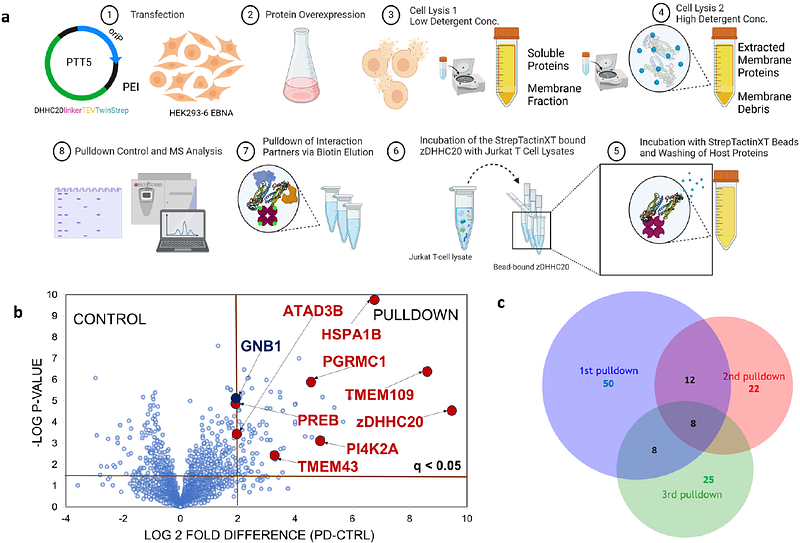T cell interaction partners of DHHC20

T cell interaction partners of DHHC20
Haxhiraj, D.; Kuropka, B.; Brencher, E.; Rosenberger, D.; Brandt, H.; Speck, D.; Scheerer, P.; Bruegger, B.; Clementi, C.; Freund, C.
AbstractReversible palmitoylation of proteins at cysteine residues represents a post-translational modification that can alter the cellular localization of proteins, change their distribution within lipid membranes or modulate their conformation and molecular interaction patterns. DHHC enzymes catalyze protein palmitoylation, while thioesterases or hydrolases can rapidly remove the acyl-chain. In human T cells, DHHC proteins have been shown to modify proteins that are involved in major signaling pathways such as Ca2+-signaling or kinase-dependent activation of transcription factors for cytokines. For DHHC20, a role in the palmitoylation of the Orai1 Ca2+-channel has been demonstrated, but otherwise its T cell interaction partners are largely unknown. Here, we show that recombinantly expressed DHHC20 robustly interacts with 28 proteins from Jurkat T cells, as shown by affinity enrichment combined with mass spectrometric analysis. We find a robust interaction between DHHC20 and the {beta}-subunit of the trimeric G protein Gs{beta}1{gamma}2, while the typically palmitoylated Ga subunit is not identified. Cross-linking mass spectrometry with purified DHHC20 and Gs{beta}1{gamma}2 then confirms a direct interaction between the {beta}1{gamma}2 domains and the enzyme, while rigid docking offers structural poses that are in agreement with the observed intermolecular cross-linking constraints. Thus, we suggest a model where the {beta}1{gamma}2 subunits of a trimeric G proteins serves as stable interaction partner of a DHHC enzyme, presumably serving as a landing platform for the G subunit that is subsequently palmitoylated by the enzyme.